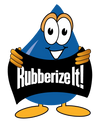News
Liquid Rubber vs. Epoxy: Which Garage Floor Coating is Right for You?
DIY Guide: How to Waterproof Your Deck or Balcony with Liquid Rubber
Creating a waterproof barrier for a plywood wood deck or balcony is essential to protect it from the elements and extend its lifespan. Below, we've compiled a detailed guide based on a variety of sources to help you waterproof your deck or balcony using a liquid rubber coating.
This is where a liquid rubber deck coating comes in. It's a crucial step in maintaining the integrity and longevity of your plywood deck or balcony.
Using A Rubber Coating Dip to Build Bus Bars for A Battery Box
The electric supercar channel on YouTube uses Rubberizeit rubber coating dip, a true liquid rubber to coat some electric car bus bars. Since Rubberizeit Dura-Rubber can bond to metal as well as many other materials, and is non-conductive it was perfect for this application.
Watch the video to see how they dipped the bus bars into Rubberizeit to fully coat and insulate them.
How to Coat a Concrete Garage Floor with A Liquid Rubber Coating
DIY Guide: Waterproofing Your Aquarium with Liquid Rubber
Are you a DIY enthusiast with a love for aquatic life? If so, creating a watertight aquarium using Rubberizeit liquid rubber is an exciting project that combines practical skills with the joy of customizing your underwater world. This blog post will guide you through the steps of waterproofing your aquarium using liquid rubber, a method that is both effective and long-lasting.







